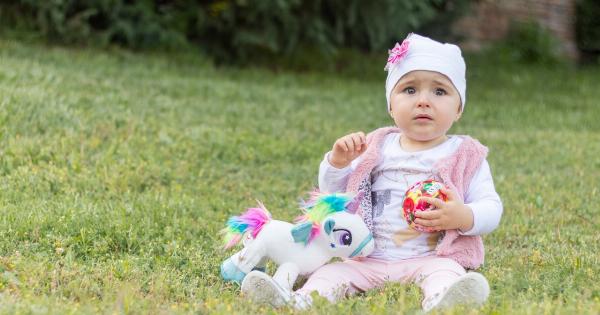As a new parent, it can be distressing and overwhelming when your baby seems to cry continuously. In fact, crying is how infants communicate with us because they cannot express their needs verbally.
It is a way for them to signal that they are hungry, tired, need a diaper change, or simply want some attention. However, sometimes despite our best efforts, their crying persists, and we cannot seem to figure out what the issue is. This article aims to help parents understand why their baby may be crying non-stop and what they can do to soothe them.
1. They might be hungry
The most common reason babies cry is because they are hungry. Newborns have small tummies and need to be fed frequently, usually every 2-3 hours. Also, if they are experiencing a growth spurt, they may need to feed more often than usual.
Signs that your baby is hungry can range from sucking on their fists, smacking their lips, rooting (turning towards your hand or breast), or crying. It is essential to feed your baby on demand and not stick to a fixed schedule.
2. They may be tired
Another reason why your baby might be crying is that they are tired. Just like adults, babies can become overstimulated and overwhelmed, causing them to cry more.
It is essential to establish a bedtime routine early on and ensure that your baby is getting adequate sleep. Signs of tiredness in infants include rubbing their eyes, yawning, and becoming fussy. However, it’s important to note that some babies can be resistant to falling asleep, causing them to become even more agitated.
3. They might be uncomfortable
Babies can also become fussy and irritable if they are in uncomfortable environments. They may be too hot or too cold, have a dirty diaper, or be wearing uncomfortable clothing.
It’s essential to check your baby’s diaper frequently and ensure they are dressed appropriately for the weather. Overheating is a common cause of discomfort in babies, and it’s recommended to dress them in a layer less than what you are wearing.
4. They may have colic
Colic is a condition that affects some babies between the ages of 2 weeks to 4 months. It is characterized by excessive crying that lasts for more than three hours a day, three days a week for at least three weeks.
The cause of colic is unknown, and there is no known cure. However, there are some things parents can do to soothe their baby, such as rocking them, giving them a warm bath, or providing a white noise machine.
5. They could be teething
Babies start teething between the ages of 4 to 6 months, and it can be a source of discomfort and pain. Teething can cause your baby’s gums to become swollen and tender, causing them to cry and become agitated.
You can soothe your baby by gently rubbing their gums with a clean finger or giving them a cold teething ring. If your baby is experiencing a lot of pain, you can speak to your pediatrician about using a topical numbing gel.
6. They may be sick
If your baby is crying non-stop and showing other symptoms such as a fever, diarrhea, or vomiting, they may be sick. Infants are more susceptible to illnesses due to their underdeveloped immune systems.
It’s essential to speak to your pediatrician if you suspect your baby is sick to ensure they get the proper medical attention.
7. They could be overstimulated
Overstimulation can cause babies to become fussy and irritable, leading to crying spells. Too much noise, activity, or bright lights can be overwhelming for infants, causing them to become distressed.
It’s important to create a calming and quiet environment for your baby to help them relax. Swaddling them in a blanket or holding them can also help soothe them.
8. They may be going through a developmental leap
Babies go through various developmental leaps between the ages of 4 to 6 months, which can be a source of distress. During their leap, babies may be fussy, cry more, and be more clingy.
They could also experience sleep regressions, where they are waking up more frequently during the night. It’s important to give your baby lots of love, patience, and attention during these times.
9. They could be experiencing separation anxiety
Babies can start experiencing separation anxiety between the ages of 6 to 8 months as they develop object permanence. They start to realize that you exist even when they can’t see you, leading to crying spells when you leave their sight.
Separation anxiety can be challenging for parents to manage, but it’s important to let your baby know that you will always return to them. Creating a consistent goodbye routine can also help ease their anxiety.
10. They may have a sensory overload
Babies are highly sensitive to their environment, and sometimes they can become overwhelmed by sensory stimuli. Bright lights, loud noises, and strong smells can be distressing for them, leading to crying and agitation.
It’s important to monitor your baby’s environment and ensure they are not becoming overstimulated. You can also try to create a calm and safe space for your baby to help soothe them.
Final Thoughts
Crying is a natural part of a baby’s development, and it’s how they communicate their needs. However, if your baby is crying non-stop and is showing other symptoms of distress, it’s essential to pay attention and determine the cause.
By understanding why your baby is crying, you can take steps to soothe them and provide them with the comfort and care they need.





























